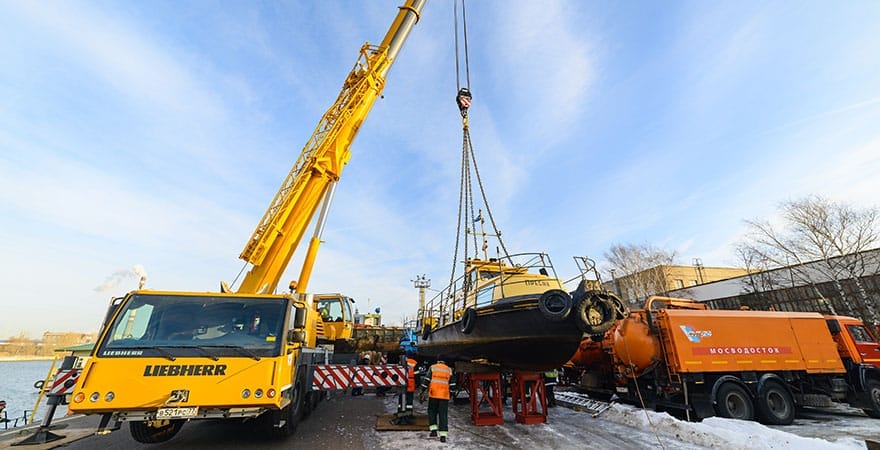The porting industry utilizes several different types of mechanical devices that help lift and shift loads including cranes. These cranes come in a variety of different shapes and sizes that can be rented from crane services. So, all of this might have got you confused. Do not worry, we are going to discuss some of the most common types of cranes used in ports.
Panamax Cranes
The name Panamax is derived from the ships passing under the Panama Canal. Panamax cranes can extend up to 30 m. It can go up to 38 m vertically. Plus, in a single lift, they can lift up to 50 tons of weight. Furthermore, in a double lift, these cranes can lift 65 tons.
On the other hand, when it comes to speed, Panamax cranes have a lifting speed of 50-125 meters per minute, a movement speed of 45 meters per minute, and a carriage travel speed of 150-180 per minute. That said, these cranes are mostly used to load and unload containers from ships to the port and vice versa.
Post Panamax
Post Panamax cranes are modern port machines that are bigger than Panamax cranes. When compared to the Panamax cranes, these cranes can lift 16 containers on the cover. Furthermore, these cranes can reach up to 45 meters with a lifting height of 35 meters.
However, the Post Panamax cranes feature more or less the same workload numbers as the Panamax cranes which is 40-50 tons in a single raise and 65 tons in a double lift. Moreover, the lifting speed in post Panamax cranes is 60-150 meters per minute, while the carriage speed happens to be 180-210 meters per minute. These cranes are mostly used to load and offload containers from ships that are too large to pass through the Panama Canal.
Super Post Panamax
The Super Post Panamax crane is the biggest of its previous versions. These gigantic cranes are becoming increasingly popular as porting industries around the world are opting for these cranes to improve operations. Their spreader can handle approximately 65 tons when it’s a double lift. Meanwhile, a tandem lift carries a workload of 110 tons and can scope up to 53 m, having a lifting height of 40 meters.
In addition to that, these cranes are characterized by movement speeds of 45 meters, lifting speed of 70-175 meters per minute, and a carriage speed of 210-240 meters per minute.
Floating Cranes
Floating cranes are essentially vessels that consist of winches attached to them. These cranes are mostly used in the construction of bridges and harbors. Additionally, these cranes are also used to lift and unload extremely heavy weights at the port.
In fact, floating cranes are also used to recover sunken ships by using the crane hook. Perhaps the most important feature of these cranes is that they can move from one place to another. This means that floating cranes are flexible enough to move objects to designated locations.
Bulk-Handling Cranes
At ports, the most efficient and effective way of handling several bulky loads at the same time is by using grabbing hoists, which are operated through riggings. Bulk-handling winches are very efficient when it comes to controlling materials such as coal, gravel, and food items like grain.
In simple words, these cranes are used for tasks that otherwise prove difficult for man and other machines. These cranes can be mobile or fixed, allowing the operators to handle around 2,300 tons per hour.
Gantry Cranes
Gantry cranes happen to be one of the most popular cranes used in different types of industries. These cranes are available in adjustable or fixed heights and are made either using aluminum, steel, or any other material. Gantry cranes are recognized by two upright beams that are attached to each other by a horizontal one.
Furthermore, these two upright beams are linked to two A-shaped frames that have wheels attached to them. This makes these cranes both portable and movable.
Final Word
Concluding, the above-mentioned are the most popular types of cranes found at ports. These cranes come with varying features to handle different types of weights. So, if you are out there looking for the perfect crane for rent VA, make sure your needs and preferences match the types you are considering.



